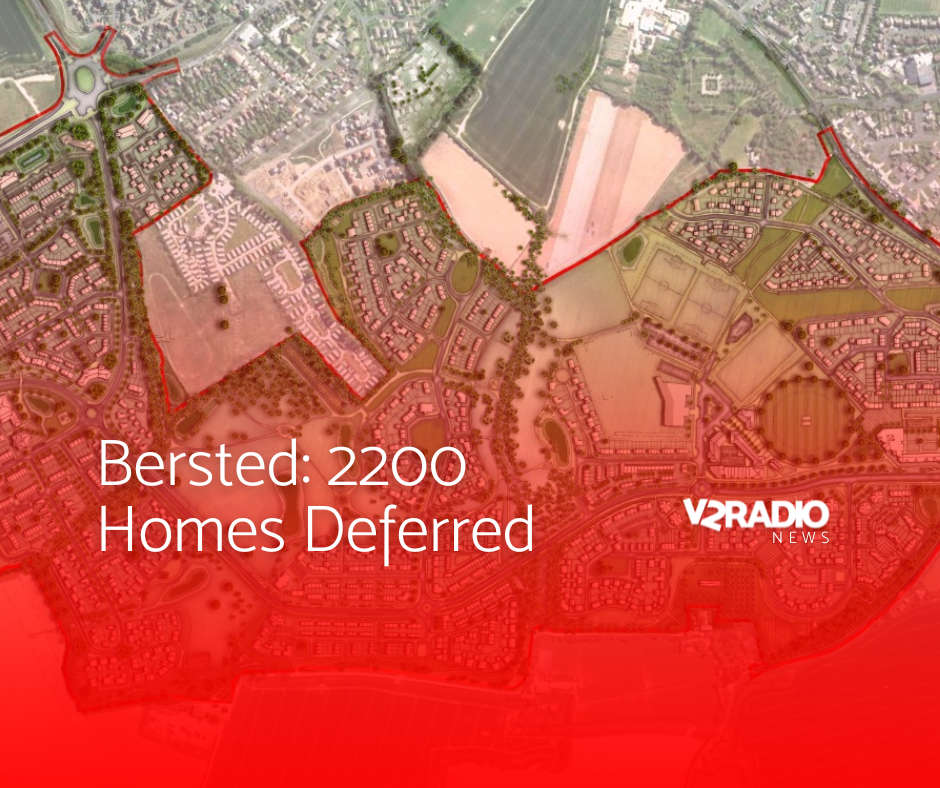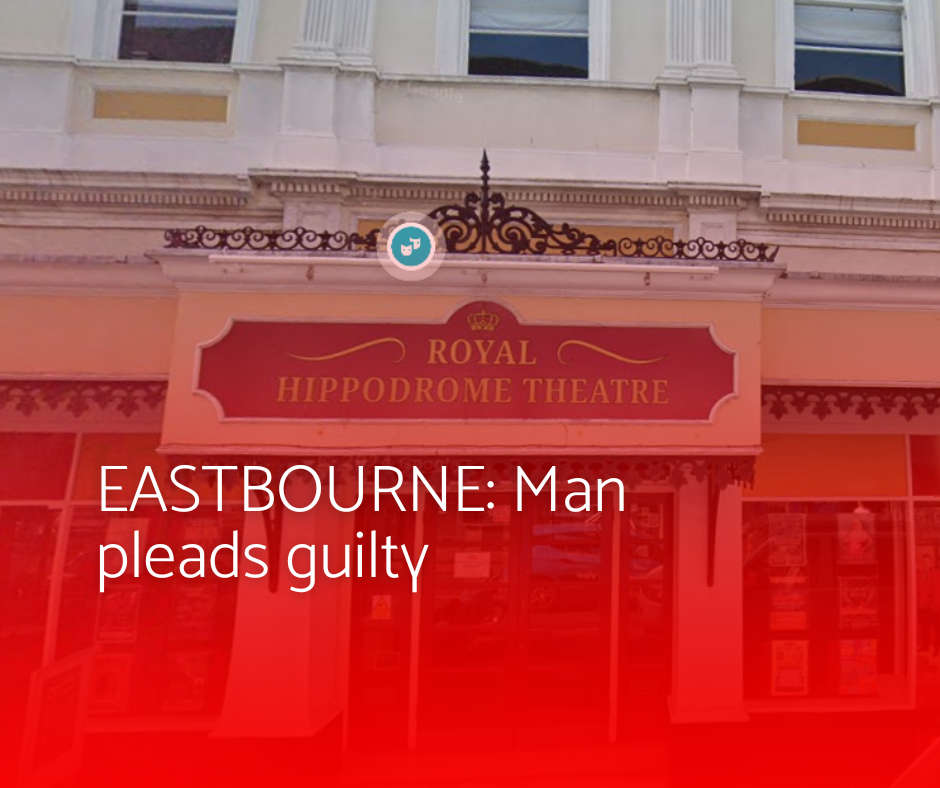
Outline plans for up to 2,200 homes in Bersted have been deferred by Arun District Council.
The scheme on land west of Bersted was deferred by a special meeting of the council’s planning committee on Wednesday, January 29, to further test the impact of the development on junctions around Chalcraft Lane and re-assess the affordable housing mix.
The site is earmarked for 2,500 homes as strategic site SD3 in the Arun Local Plan and if approved the scheme would be built in eight phases over 12 years, finishing construction in 2039, according to a report presented to the committee.
The plans were submitted jointly in 2022 by the Church Commissioners for England and developer Landlink Estates Ltd, alongside property consultant Lichfields – with the council in consultation on the plans to develop the site for around 2,300 homes since 2017.
A new spine road is to be constructed through the development, with a connection north to south from the Chichester Road/Gladius Way A259 junction to the Chalcraft Lane/Lower Bognor Road junction, to help with potential pressure on Chalcraft Lane.
The spine road would be set to finish by 2030, with planning conditions specifying it must be finished before more than 225 homes from the southernmost access and 338 homes from the northernmost access could be occupied.
Two more junctions will be connected to the spine road once the development is completed, one to the A259, Chichester Road, and another to Chalcraft Lane.
The scheme would also likely include a new three form primary school, a healthcare facility, a community hub including a library, a care home, two local centres, a wellness trail, sports pitches including a 3G pitch, and police and fire and rescue service provisions.
About 25 ha of the 144 ha development would be open space and the scheme hopes to achieve a 10 per cent biodiversity net gain, with 2.1km of lost hedgerows (3 per cent of total hedgerows on the site) to be replaced elsewhere with around 7.33km of new hedgerows.
Around 4.5 ha of commercial, business and retail floorspace will be included to the north of the site, and buildings throughout the development will likely reach up to three storeys but could go up to four in ‘extraordinary circumstances’, according to planning officers.
Plans saw backlash from councillors and residents mainly over the level of affordable housing, with the development to see 10 per cent compared to the council’s required rate of 30 per cent affordable housing.
Independent advisers determined that a rate of 30 per cent would make the scheme unviable, citing high combined costs of construction and money paid to the council under section 106 order, of £178 million – or around £82,000 per home.
Council planning officers stated the developer took a lower gross development value (GDV), or profit margin, in order to secure the 10 per cent rate, stating the national government says the acceptable range of GDV is within 15 to 20 per cent.
The proposed affordable housing scheme would be a 50/50 split between affordable rent and shared ownership.
A review mechanism for affordable housing will be built into the planning conditions of the scheme, to ensure if costs come down in the future the council can potentially increase the level of affordable housing on the development.
No objections were submitted by statutory bodies, with the exception of West Sussex County Council Education, who submitted a holding objection to the plans over how Arun council determines contribution amounts for education from developers.
Some 126 objections were submitted by residents about concerns around traffic congestion, lack of road and social infrastructure, loss of countryside, flooding, lack of public consultation, and overdevelopment.
Pagham, Aldwick and Bersted Parish Councils, and Bognor Regis Town Council, also objected to the plans.
An agent for Lichfields told the committee that an environmental impact assessment had shown no ‘significant adverse impacts’ as a result of the scheme, saying the council had endorsed a framework masterplan for the scheme in 2020.
They said the cost per home for the scheme was high due in part to a ‘generous’ £59.2 million section 106 agreement, which would help improve Arun’s infrastructure.
Chair of the committee Simon McDougall (Lab, Pevensey) called the level of affordable housing in the scheme ‘derisory’ and would lead to more ‘speculative’ developments across Arun, saying traffic in the area would be ‘nose to tail’ once the scheme was finished.
Martin Lury (LDem, Bersted) said he was concerned about setting a precedent of a rate of 10 per cent affordable housing on future developments in the district, saying the development would likely just ‘exacerbate’ Arun’s housing crisis.
He said: “Since the original concept of [the scheme], we’ve lost 440 affordable dwellings and we’ll be left with 220.
“This area needs starter homes, they need social homes for the local population – they do not need five bedroom houses just so we accommodate half of Surrey.
This new spine road, the reality is it’s part of the infrastructure this development has to have, please don’t say its a massive piece of infrastructure for the area, because it’s not.
“We’re going to have about one and a half thousand from Pagham and another two and a half thousand from west Bersted, that’s 4,000 people we’re needing to accommodate on the roads, and they’re just not good enough.”
The council’s Group Head of Planning, Neil Crowther warned members that it would not be ‘sufficient’ to refuse the plans because they ‘don’t like’ the viability work done by officers, saying the ‘correct process’ had been followed.
He said if the plans went to appeal at the planning inspectorate the council would lose and have costs awarded against them, saying they needed to find reasons and evidence that don’t conflict with conclusions of their own officers, none of whom objected to the plans.
Members voted down the council planning officer’s recommendations to approve the plans subject to a section 106 agreement.
Instead members deferred the plans to get more information about impacts of the scheme on nearby junctions and to revisit the affordable housing mix to bring it more inline with council policy.

 VIDEO: Police in Hampshire carry out rural community day in north of county
VIDEO: Police in Hampshire carry out rural community day in north of county
 Free community events to help Chichester District residents develop work-based skills
Free community events to help Chichester District residents develop work-based skills
 New Portsmouth budget proposals
New Portsmouth budget proposals
 Anti-social behaviour a blight on businesses in Barnham
Anti-social behaviour a blight on businesses in Barnham
 Man pleads guilty to Eastbourne theatre burglary
Man pleads guilty to Eastbourne theatre burglary
 West Sussex schools honoured at the Houses of Parliament
West Sussex schools honoured at the Houses of Parliament
 Brighton drug dealer sentenced
Brighton drug dealer sentenced
 Police in Chichester investigate an unexplained death
Police in Chichester investigate an unexplained death
 LGBTQ+ voices take centre stage in new Chichester exhibition
LGBTQ+ voices take centre stage in new Chichester exhibition
 National firearms amnesty launched ahead of new law change
National firearms amnesty launched ahead of new law change






